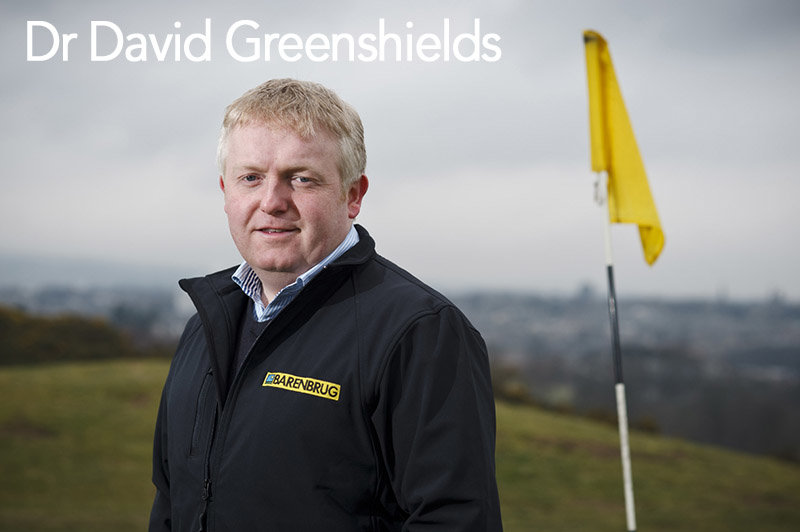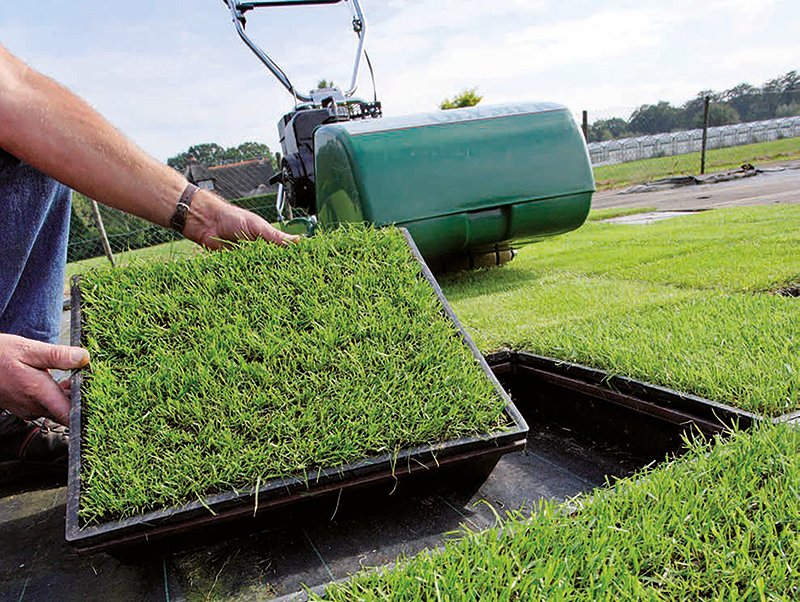Seed breeding update
As the Covid-19 vaccination programme continues apace in the UK and pandemic restrictions ease, the prospect of some normality resuming for major sporting and stadium events is a welcome one.

As the Covid-19 vaccination programme continues apace in the UK and pandemic restrictions ease, the prospect of some normality resuming for major sporting and stadium events is a welcome one.
Dr David Greenshields, Amenity Commercial Manager, Barenbrug UK
As the Covid-19 vaccination programme continues apace in the UK and pandemic restrictions ease, the prospect of some normality resuming for major sporting and stadium events is a welcome one.
At Barenbrug we’ve been fortunate in being able to continue our extensive product development and breeding programme in the UK and across Europe right through the pandemic period. This has allowed us to stay on track, investing in leading research and development in the grass seed profession, making exciting new discoveries, refining and improving our blends to meet future climatic challenges and the escalating demands of high-performance pitches.
With eyes firmly fixed on the future, we’re breeding technically-advanced, high-performance cultivars with resistance to diseases being driven northwards by our changing climate.
Research and product development
Barenbrug has been developing cultivars at research stations in different climatic zones for more than 50 years and is one of the largest grass seed producers in the UK, distributing more than 4,000 tonnes of grass seed each year.
There are two distinct breeding stations in Europe for turfgrasses – one in the Netherlands at Wolfheze and one in South-West France at Mas Grenier. These stations collaborate closely, testing material extensively across Europe.
Our UK research facility near Evesham in Worcestershire, is Cropvale. As well as development work at Cropvale, our R&D process in the UK & Ireland involves working with the Sports Turf Research Institute (STRI) and the Irish Sports Turf Institute (ISTI), and we are increasingly working in partnership with end-users to delve even deeper into market needs.
UK and Ireland trials
A good example of our collaborative approach to research and development is Sustainable Grass Technology (SGT), which has brought together development work across Europe at breeding stations with external partners (STRI and Landlab) and is now expanding further into localised trials with end-users.
In 2020 trials were initiated with St Andrews Links and Gerrard’s Cross Golf Club to scrutinise drought and heat stress in the UK more closely. The St Andrews trial focusses on traditional links grasses for tees and fairways, while Gerrard’s Cross will be examining a wide range of species and mixtures to provide data predominantly for the changing climate of southeast England.
2020 also saw further investment in high quality research and development for the UK and Ireland turf market by trialling the performance of new varieties and mixtures for golf greens with the ISTI. The golf green trial area is a newly-constructed USGA specification at the ISTI research centre in County Wicklow, Ireland.
Breeding achievements
Our ryegrass breeding programme has resulted in some superb new cultivars, which are available in our winter sports mixtures Elite Sport, RPR Sport and Multi-Sport, each formulated for the subtly differing requirements of a range of sports facilities.
In Table S1 of the BSPB/STRI Turfgrass Seed 2021 booklet, perennial ryegrass under winter sport wear, Barzico tops the table with a Mean Score of 8.1. Its closest rival at #2, is another new Barenbrug variety, Barbasten. Barzico ranked #1 for both Live Ground Cover (wear tolerance) and Visual Merit – the two contributing traits to the S1 table ranking. And Barpersie overall ranked #3, is #1 for Shoot Density, another important characteristic. Barenbrug bred eight of the top-20 varieties in the 2021 S1 table, including Baradona – new in the Sport Range for 2020 and surely the best of the footballer cultivar names. And there’s more to come for 2022.
Here are several other important considerations in our approach to turfgrass breeding.
Mixture synergy
Single variety performance is one thing, but turf managers use a blend of perennial ryegrasses when sowing out or overseeding pitches. There’s a huge advantage in being able to utilise diverse genetic material from two breeding locations when assembling a dedicated seed blend for the winter sports market.
For example, a lot of the cultivars at the top of the BSPB/STRI Turfgrass Seed list are what is termed ‘late-heading’ as they naturally set seed later in the calendar year. But Barorlando and Barcristalla head significantly earlier in the year. Turf managers will never actually see seed heads on plants in a well-managed sports field, but varieties will inevitably take a dip in performance when they are going through this natural cyclical change. By combining both late and early types in a blend, we reduce this negative effect which leads to more consistent year-round performance.
Superior colour
An additional benefit of our French material is its superior colour. For annually fraize-mown surfaces under the scrutiny of high-definition TV coverage, this trait should not be ignored.
Barorlando and Barcristalla ranked #1 and #2 out of the top-50 varieties, respectively, for summer genetic colour, scored in September at STRI. They exhibit by far the best compromise in performance (Mean Score) and Colour (Autumn) of all listed cultivars. With the addition of undersoil heating and grow-lights, this effect is expected to last long into the winter months in a stadium environment.
Enhanced disease resistance
I invite turf managers to speak directly to us about their individual requirements and their particular sites. For instance, would you compromise a small amount of wear tolerance to ensure increased resistance to Drechslera leaf spot? If you are responsible for a pitch in an enclosed stadium, this would seem a logical precaution.
Drechslera tolerance is scored independently as part of the French trial system (turfgrass-list.org), which utilises 12 research locations in six different countries to formulate its data. Barprium, another recent new cultivar in our Sport Range, ranks #1 for this trait with an outstanding score of 7.58 (the average for all varieties is 6.37). Barbasten also performed strongly.
We are conducting further trials relating to grey leaf spot resistance in France. The results will inform our future product development specifically for the UK market, where the first occurrence of Grey Leaf Spot disease in a UK sample of perennial ryegrass turf was verified in August last year.
Fresh seed, home grown
With our network of growers, research, distribution, regional technical experts, production, and manufacturing sites across the UK, Barenbrug UK is increasingly focused on sustainability and determined to minimise any negative impact on the environment.
For many years, Barenbrug’s strategy has been focussed on increasing the proportion of UK grown seed in the Sport Range. It may surprise you to learn that around 50-60% of our seed is now grown in the UK, with an even higher percentage of ryegrass (70%) home grown too. As a result, it is ideally suited to our climate and growing conditions. Fresh, high-performance seed that’s grown, harvested, bagged and transported in the UK means security of quality, supply and reduces seed miles.
To keep up to date with the latest developments, follow us on Twitter @BarenbrugUK

